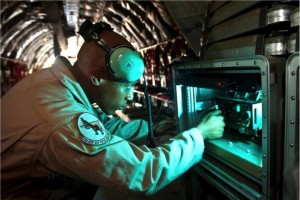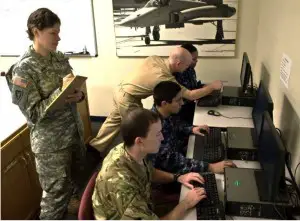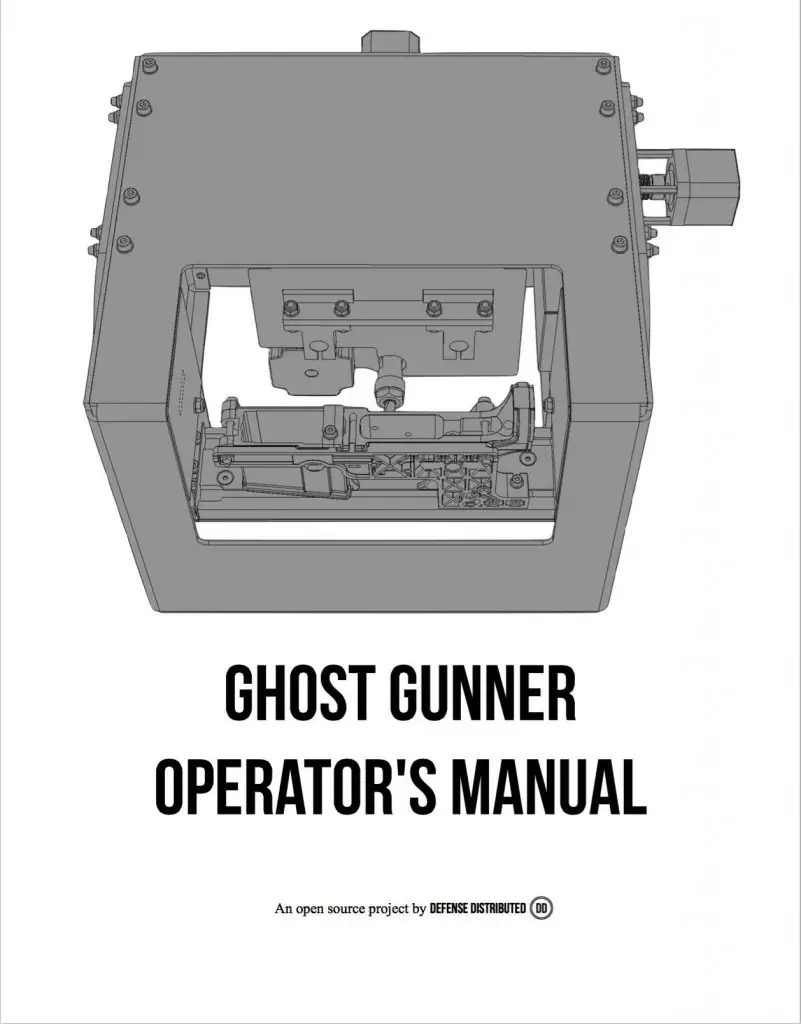Monthly Archives: April 2015
First, here’s the unclassified Official Cyber Strategy of the USA, signed by Defense Secretary Ash Carter. Initial take: the guy really is an empty suit, stuffed with Beltway entitlement, and serving various constituencies, with the national defense of the USA not as prime as it probably ought to be here.
(U) DoD Cyber Strategy 2015, 17Apr15.pdf
Here’s how Carter (and his underlings, more Beltway homesteaders without a real-world accomplishment to their names) define the cyber threat on p. 9 of the document:
From 2013-2015, the Director of National Intelligence named the cyber threat as the number one strategic threat to the United States, placing it ahead of terrorism for the first time since the attacks of September 11, 2001. Potential state and non-state adversaries conduct malicious cyber activities against U.S. interests globally and in a manner intended to test the limits of what the United States and the international community will tolerate. Actors may penetrate U.S. networks and systems for a variety of reasons, such as to steal intellectual property, disrupt an organization’s operations for activist purposes, or to conduct disruptive and destructive attacks to achieve military objectives.
So what’s wrong with this? Here’s one: defining the military cyber threat to include commercial hackers and disruption of non-government “organizations.” No one who’s au courant with the cyber threat thinks that DOD has its own networks under control, so this attempt to subordinate DOD’s cyber defense activities to big and inept corporations like Sony, not incidentally among the owners of the donors to Carter’s political sovereigns, turns defense resources to private profit and distracts them from national defense. No, defending Sony is not an American defense interest. Hell, it’s not even a US corporation; why should we give
Oh, we forgot. Sony bought and paid for made substantial donations to the President and the other officeholders to whom Carter really holds his fealty, rather than to the quaint old Constitution to which he swore an insincere oath.
Let’s continue with Carter, and see if he gets any better:
Potential adversaries have invested significantly in cyber as it provides them with a viable, plausibly deniable capability to target the U.S. homeland and damage U.S. interests. Russia and China have developed advanced cyber capabilities and strategies. Russian actors are stealthy in their cyber tradecraft and their intentions are sometimes difficult to discern. China steals intellectual property (IP) from global businesses to benefit Chinese companies and undercut U.S. competitiveness. While Iran and North Korea have less developed cyber capabilities, they have displayed an overt level of hostile intent towards the United States and U.S. interests in cyberspace.
The first sentence is one key to cyber: it’s a plausibly-deniable act of war, which is why all major powers (Russia, China, and not incidentally the USA) maintain an advanced persistent threat capability. This administration in particular is in love with the concepts of deniable, technical, literally “dehumanized” as in humans-out-of-the-loop and not at risk, technical war. It’s reminiscent of the disastrous Stansfield Turner days at CIA, when Turner played to the agency’s Polyphemos. “Noman has blinded me!” cries the agency at the inevitable “intelligence failure” result, in Turner’s case including the Russian invasion of Afghanistan and the Iranian revolution. Although he seems intent on recreating the bleak Cy Vance/Stan Turner days of his namesake President, this Secretary of Defense is unrelated to Jimmy Carter in anything.

This Air Force guy, A1C Nate Hammond, is a commo guy, not a cyber guy, but they needed him to meet some quota in the document.
Well, except in ineptitude. If there is a brotherhood of bozos, maybe with a secret handshake or password/countersign (“Are you a turdle?”), these guys are both life members.
Again, that the Chinese state steals IP is not exactly novel, and the Chinese are not alone; some of our allies do the exact same thing (cough, France, Israel, cough). The US, for that matter, does steal foreign technical data, the difference is, we don’t steal for order for private industry.
It is a defense matter when foreign nations steal defense material from the military or defense contractors. We’re not big on defining things as crimes rather than acts of war or terrorism, but stealing from Sony, for example, or General Electric, is not an act of war, no matter how much money those corporations sluice to Carter’s owners and oversee superiors.
In addition to state-based threats, non-state actors like the Islamic State in Iraq and the Levant (ISIL) use cyberspace to recruit fighters and disseminate propaganda and have declared their intent to acquire disruptive and destructive cyber capabilities. Criminal actors pose a considerable threat in cyberspace, particularly to financial institutions, and ideological groups often use hackers to further their political objectives. State and non-state threats often also blend together; patriotic entities often act as cyber surrogates for states, and non-state entities can provide cover for state-based operators. This behavior can make attribution more difficult and increases the chance of miscalculation
Well, it’s nice to see some awareness of ISIL penetrating the thick skulls of the E-Ring, but what they’re calling a cyber threat is simply an information operations (IO) effort that is superior to that of the United States. And as long as we have IO run by giggling PR dollies, and counter ISIL guns and swords with feeble hashtags, we’re #screwed.

Diverse services — check. Diverse sexes — check. Diverse races and ethnicities — check.
Can they fight? Who cares!
You could fisk the whole thing like this. Its full of yes-hope-is-a-method naïveté, like considering the Chinese threat badly punished because we indicted five PLA members for stealing IP. (We’re sure they’re shaking in their shoes. Either that or the new guys have redoubled their efforts because an indictment is the new most-coveted achievement in Chinese cyber — more likely). It’s also full of carefully-staged “college pamphlet” or “annual report” photos of perfectly-diverse cybernauts — selected for just the “right” mix of joint-service uniforms, DOD civilians, and skin-tone diversity. In other words, it’s all full of that which proceeds from the north end of a south-facing male bovine.
Naturally, there’s a new bureaucracy to be built, under a towering buzzword, the National Initiative for Cybersecurity Education, and more SES and political appointee jobs, like the Office of the Principle Cyber Advisor to the SecDef, which will oversee the Cyber Investment and Management Board, which will operate a senior executive forum and coordinate for something called the Deputy’s Management Action Group. It’s all process, with all these Beltway drones memo-ing one another.
Wait. We said, “Two takes”, in the title. What’s the other take on cybersecurity?
Well, here’s the NATO cyber team.
The whole team. (Well, actually there are six men, so they can field two of these three-man teams. Feel better?).
That sound you hear is chortling in Chinese.
Canadian Machine Gun Resto Project
Two machine guns in battered condition on a Canadian war memorial are being examined and will be cosmetically restored to their original condition — and efforts are underway to determine their true provenance and history.
Both are German MG08 guns. The one in this picture, on the south side of a roadside cenotaph in Harold, Ontario, was captured in 1918 at Arras; the hole in its water jacket may have been caused by Canadian fire. The cenotaph itself is rare: most Canadian cenotaphs list only the war dead, but this lists the returned surviving veterans as well as the fallen.
MG08, captured at Arras, 1918.
A pair of 100-year-old German guns, taken as souvenirs at the end of World War I, will be temporarily removed from the cenotaph on Highway 14 to be refurbished thanks to the efforts of the local branch of the Royal Canadian Legion and the Stirling-Rawdon Historical Society.
Silenced in 1918, the guns will never fire again says society member John Lowry, but they will be cleaned up and returned to their original colours, perhaps even solving a few mysteries along the way. Lowry explains that significant research has been done on the weapons, a pair of Maschinengewehr 08 machine guns captured by 2nd Division CEF troops at the end of the war, but there are many unanswered questions as well.
via Machine gun restoration project under way.
John Lowry and Phil Martin of the Historical Society will try to match the gun’s original color scheme — if they can determine what it is — and answer the question of what made the hole in the Arras gun. They’re also trying to find photographic evidence tying the gun’s partner to a particular location or battle.
John Lowry (l.) and Phil Martin (r.)
Lowry thinks the hole in the water jacket may have been the act of a Canadian sniper:
[T]he Arras weapon appears to have been disabled by a sniper’s shot and the restoration may lead to a conclusive answer, he adds, “if we find a .303 bullet in there.” Lowry says that the guns, capable of firing 500 rounds per minute, were water-cooled using a chamber that surrounded the barrel and marksmen would deliberately aim for it hoping to quickly overheat the weapon rendering it useless.
According to the article, trophies like this were once commonplace across Canada, but the herd — once numbering some 15,000 captured arms, originally intended to populate a grand war museum, but on the project’s cancellation scrapped or spread across the very large country — has been thinned, less by time than by WWII scrap drives.
[T]he remaining local pieces, which also include a trench mortar in Madoc and a field artillery piece in Trenton, are only a small fraction of the enemy weapons that ultimately arrived in Canada after World War I. …. A significant number, Lowry says, were scrapped during World War II, including a pair of machine guns received by the village of Stirling. The fate of a similar pair that arrived in Marmora is unknown, but they too may have been scrapped.
The Stirling Branch of the Royal Canadian Legion has raised the cost of the MG restoration. And no, they won’t be restored to firing condition — it is Canada up there, which is kind of like Massachusetts with more polite people and much better drivers.
Is This Book For Real?
 We’ve been reading Tiger Tracks: The Classic Panzer Memoir by Wolfgang Faust. Republished by Sprech Media, which publishes and republishes English translations of German combat memoirs of WWII (mostly), this is a 1947 memoir by a Panzer VI Tiger driver who fought on the Eastern Front, it says here. Its German title was the Wagnerian Panzerdämmerung.
We’ve been reading Tiger Tracks: The Classic Panzer Memoir by Wolfgang Faust. Republished by Sprech Media, which publishes and republishes English translations of German combat memoirs of WWII (mostly), this is a 1947 memoir by a Panzer VI Tiger driver who fought on the Eastern Front, it says here. Its German title was the Wagnerian Panzerdämmerung.
But there are a few details that give us pause. In the first place, it’s graphic to the point of gaudy. Here’s a taste:
One such tank shot at us with a maniacal speed, its tracer rounds flashing past us as we manoeuvred around it to put a shell in from its side. Our 88mm round went exactly centre, just above the snow-covered tracks. The turret hatch lifted up and detonating ammunition spiralled out into the red-tinged sky, adding to the smoke pouring across the stained, rutted snow. Even then, the driver’s hatch opened and a crew man emerged, still in his protective headgear, holding a machine pistol. He fired on us with the little gun, the bullets pattering on our front armour, until our hull MG man brought him down with a single shot. Every round had to count now, had to find its mark; while every manoeuvre and evasion used up our dwindling fuel.
I lost track of time in that fight, with my head spinning from the amphetamines and my body unaware of pain. I noticed, with a strange detachment, that the sky was whitening, and the sun was now looming over the ridge above us. It was a fierce, crimson sun, casting jagged shadows from the peaks, and lighting the scattered wrecks of panzers that burned around us. In its light, the Stalins withdrew up the slope, reversing rapidly, firing as they left. Our 75mm PAK in the bunkers caught one of them with repeated hits as it lurched backwards in the snow, smashing off the very tip of its pointed hull. The Red tank kept on reversing, with two crewmen visible inside the hull through the split-open front. Wilf was unable to resist the temptation: he fired directly into the exposed compartment. Cool as always, he had selected high-explosive, and the detonation of the shell deep inside the confined steel box blew out the driver and machine-gunner from the fractured hull, sending them cartwheeling across the snow, trailing smoke. The Stalin’s ruptured compartment became an inferno of orange flames, in which other men were visible, struggling and writhing, until the vehicle was enveloped in its own smoke.1

Driver station of the Tiger in running condition at Bovington. Note vision block (all images embiggen with a click).
There’s a lot of writhing in flames in this book. Hits on tanks frequently let Faust (through his single vision block!) observe the deaths of the Russian or German crew inside. Hits on half-tracks (which he calls “Hanomags,” after the original manufacturer) do likewise, when they don’t blow vividly-described body parts in the air, launch vehicles in the air to land on screaming Panzer Grenadiers, or scythe heads off.
It’s all very Hollywood. One scene has German infantry struggling in neck-deep snow until an artillery shell neatly beheads them, leaving their “red spurting necks” as the only parts visible. It all seems rather over-the-top, even for the eastern front.
No doubt there was unimaginable carnage, we don’t question that. We question whether one guy could see all that carnage, although one guy could certainly see lots of carnage and imagine the details.
And there are a few oddities. He claims to be fighting JS- (or IS-)3 Stalin tanks in 1943. He just calls them “Stalins,” but its clear from the way he describes the vehicles — domed turret, and a precise description of the arrangement of the glacis armor — that he’s talking about a JS-3, not the earlier Stalin I or II tanks. (The JS-1 resembled the Tiger and other prewar and early-war tanks in its armor layout, and had a roughly square turret. The JS-2 had a turret resembling a T-34-85). Yet every reference we’ve seen suggests that Chelyabinsk Tractor Works, the Soviets’ go-to tank shop, didn’t start on the Objekt 702 project until the fall of 1944 at the earliest, and the JS-3s first showed up in combat in the Battle of Berlin, and were unknown to the Western Allies until the first Soviet victory parades.
Finally, there is an entirely implausible subplot with a captured Russian female lieutenant. Ripped right out of the movie script, that!
And yet… there are parts that ring true. There’s Faust hastily cannibalizing a vision block from a knocked-out Tiger, and detailed descriptions of the running gear and its limitations. He never drives his Tiger at an unreasonable speed — it was a slow tank, and he’s typically grinding along at a plausible 10 or 20 km/h. For example, these sound plausible to us:
Inside our panzer, it was humid now, as the groaning transmission became hot and warmed the sealed-in air. Condensation collected on my dials, scalding oil from the transmission spat on my face, the reek of carbon monoxide made my head throb, and I almost envied our commander up in the turret, still with his head up in the morning air – despite the risk he ran of losing that clever brain to a shell or a sniper.2
Driveshafts and transmissions crowded the driver in his position in the left bow of a Tiger. And this should ring true to any former tank or mech guy:
Our Tigers were never designed to drive sustained journeys, not even on smooth city roads. The stress and wear to the running gear was too great, and the entire engine and transmission itself only lasted for 1,000 kilometres before being completely replaced. Several of our panzers were at that point now , and their crew muttered gloomily about the prospects of them finishing the journey at all without burning out or seizing up. Even the track links – those great chunks of steel weighing ten kilos each – wear quickly under the duress, and the tracks must be tightened and adjusted if the track is not to snap or become tangled on the drive wheels. The pins that hold the links together are thick metal rods, like your grandmother’s biggest knitting needle – but if one breaks, the sixty tonne panzer can be lost.3
One is left with the impression that perhaps the author is a trained Tiger driver, or at least has read his Tigerfibel closely, but has embellished his combat experience to make for a more vivid (and horrifying, and salable) book. Some years ago we reviewed very positively a book by a Soviet TC who fought on this same front in a T-34; Vassily Bryukhov’s descriptions of combat were no less vivid, but were much more credible than Faust’s.
We suspect we are not the first to have doubts about this work, and wonder if it was equally controversial when it was first published in war-wracked Germany.
UPDATES
A small note at the end of the book’s text says that “Wolfgang Faust” is a pseudonym, and the names of all others in the book have also been changed.
At book’s end, Faust is very nearly a sole survivor (his TC, a unit XO turned commander, is another). While there certainly have been sole survivors of crews, units, etc. in history, “sole survivor” is a very common claim in wannabe war stories, perhaps to explain plausibly the lack of corroborating witnesses.
A reader in Germany tells us that there is absolutely no reference to this “classic Panzer memoir” discoverable on the German-language internet; he reminds us of the stirring Boy’s Own type tales that were printed in the pulp mag Der Landser (something like a German equivalent of The GI) during the magazine’s 1954-2013 run. (It has resurfaced as Weltkrieg, “World War”, and seems to have its roots in a wartime propaganda pulp for Hitlerjugend boys. They also were apocryphal stories, with brave heroes, minimal Nazi politics, accurate technical details and lurid combat scenes.
NOTES
- Faust, Wolfgang (2015-03-04). Tiger Tracks – Classic Panzer Memoir (Kindle Locations 1769-1782). Bayern Classic Publications. Kindle Edition.
- Ibid., Kindle Locations 59-62.
- Ibid., Kindle Locations 718-724.
Where Do TSA Mongs Come From?
Well, we know the figurative answers. The bottom of the barrel. The far-left tail of the bell curve. The short school bus. Et cetera, et cetera, et cetera, as the King of Siam might say. After all, no one good, decent, honest, competent, moral or ethical has ever been employed by TSA in any capacity whatsoever. But where do they really come from?
This is no $#!+: Pizza Boxes.
 All the pizza you can eat. Not to mention all the people of the opposite sex that you can grope. (Or the same sex; nobody ever said TSA was judgmental, after all).
All the pizza you can eat. Not to mention all the people of the opposite sex that you can grope. (Or the same sex; nobody ever said TSA was judgmental, after all).
Yeah, we’ve been critical of the TSA before. We’ve been known to tell you guys that no one good, decent, honest, competent, moral or ethical has ever been employed by TSA in any capacity whatsoever. But it’s TSA itself that knocks itself out proving this.
Every once in a while someone comes up in the comments with a reference to the Air Marshals (you mean the guys that did this? No one good, decent, etc.) or the exception-proves-the-rule, “My cousin/girlfriend/Downs-syndrome kid works at TSA and he or she is not like all the others.”
Pizza boxes, people. They’re recruited by pizza boxes.
Hat tip, the incomparable Ken @ Popehat (does that make this a popehattip?)
Two Approaches to Immigration
First, let’s see how the Land of Oz deals with would-be welfare “refugees.”
Serious looking bloke — check. Serious message — check. Serious about border security and immigration — check, and check. (Hat tip, Gerard Vanderleun).
We could use some of that. Instead of a serious bloke in a camouflage uniform (that, unlike our Army, the Diggers have not seen fit to change in a couple of decades), we have an airhead Beltway-nomenklatura lawyer named Sarah Saldana as head of our Immigration and Customs Enforcement agency, which she has stripped the “enforcement” clean out of and sunk, as we noted this week, to the bottom of the briny deep of morale with the deft assurance of Gunther Prien in U-47 torpedoing HMS Ark Royal in Scapa Flow.
Here’s Ms Saldana, displaying the limits of ability in one who has been steadily advanced in government and other large organizations by dint of affirmative action, and has lost (or, more probably, never developed) the ability to think like people in the real world have to do.
The video is here. We didn’t embed it because it’s 450 Megabytes. (The DC nomenklatura doesn’t need any stinkin’ compression, they don’t need to mind their bandwidth, they got taxpayer Benjamins like Hog Manor has oak leaves in November)
Some high points:
She says she’s spending some staggering sum (a billion something?) on IT upgrades, but she can’t describe the upgrades, and admits she doesn’t understand them. “I’m a lawyer,” she says, as if that exempts her from non-lawyerly aspects of her job.
Asked why ICE is turning loose scores of thousands of, not mere immigration-technicality violators but recidivist and violent criminals, she first either gets confused, or feigns confusion as an obfuscatory stratagem, and then seems to at once admit it’s happening, deny it’s happening, and casting blame, in a lawyerly conditional, on her predecessors from the previous administration seven years ago, that is, if there is any blame to be cast.
She interrupted Rep. David Young (R-IA) to tell him that she didn’t care what the black letters of the law said, that was subordinate to what the All-Powerful Person of Godhead the President wanted. Homeland Security Today reports:
Young Thursday “had a memorable exchange with Immigration and Customs Enforcement (ICE) Director Sarah Saldaña during a House Committee on Appropriations Homeland Security Subcommittee hearing on the agency’s budget. Saldaña interrupted Young to say agency policy trumps the law, which I think feeds into the larger narrative of management flaws, dysfunction and distrust at the Department of Homeland Security (DHS); it is a disturbing trend,” a Capital [sic] Hill source told Homeland Security Today on background.
HS Today got direct quotes from a floored Young, also:
“I told director Saldaña that if I had policies or directives that were contrary to the law I would understand if my employees did not want to follow them. I would expect them to follow the law first,” Young said. But, “director Saldaña interrupted me to say, ‘That is where you and I probably have a fundamental disagreement.’ She went on to say that she expects those under her to follow her orders, not the law.”
Young said he was surprised by Saldana’s answer and pressed her “further regarding the possible threat that DHS officials might feel is being leveled at them when they are simply trying to obey the law,” the Hill source said.
“We can have policy debates and disagreements, but we must demand better management of our federal government at every level,” Young retorted, noting that, “Reports show that of all the federal agencies, ICE currently ranks last in employee satisfaction. The morale is low, employees up and down the line do not know who they can trust, nor can they rely on the plain letter of the law.”
“America is a nation of laws and I take that very seriously. The culture problems at ICE run very deep, but I think they start at the top,” concluded Young.
Young said he was floored by Saldana’s response because “America was founded on the principle that no person is above the law and I take that very seriously.”
Young said, “When the director of the second largest federal law enforcement agency, and a former US Attorney, believes that officers sworn to defend the Constitution should follow her policies instead of the law, you know there is something deeply wrong.”
Exercises for the reader:
- Can you articulate one reason why ICE morale has hit the seafloor near the Marianas Trench, and begun drilling for more depth?
- Without knowing any more about them than you can infer from this post, is morale in Australian customs and immigration agencies likely to be higher or lower than their American cousins’ is?
- Are the ungodly-expensive IT initiatives at ICE likely to enhance the agency’s communications and its law enforcement mission? Why or why not?
SIG MPX QC Trouble? Or One Guy Got One Lemon?
We are big fans, in theory, of the SIG MPX. We’ve been following the saga of the gun itself, and of the company’s battle (a losing battle, so far) to get their innovative muzzle-brake-converts-to-suppressor-with-a-registered-tube version approved by ATF. We like the look of this modernized take on the MP5 form factor, and now people are starting to get them out in the field. And that, as Art Spiegelman wrote of his dad’s experiences, is where the troubles began.
Bearing Arms had a report on a problem with a production MPX. The problem was experienced by a guy named Darrell with a YouTube channel he calls “Tactical Existence” (really?); his tagline (gagline?) is: “Tactical is not just a word it’s mindset & a lifestyle.” (Punctuation his).
You don’t say.
Anyway, the guy’s website has the MPX video at the top. However, he does not show the MPX malfunctioning out of concern for his own liberty.1 Initially, he loved the MPX, firing it with the SIG Brace against his cheek and fastened to his arm. But then it began to double on him. His explanation:
We started with a fresh case of PMC 9mm brass ammo, and much to our surprise the gun almost immediately started to have serious malfunctions. At first we weren’t sure if the guns having some weird sort of bumpfire situation, or if it was something more serious like a double fire. After running a few quick test there was no doubt that the gun was in fact having a double fire malfunction. The weapon would fire with a pull of the trigger and then again on the reset of the trigger. this is a big problem because as most of you already know if you are in possession of a firearm that fires more then one round with a single pull of the trigger it’s your fault no matter if it is or not, well in the eyes of the ATF anyway.
That’s a reference to US v. Olofson, right there, although he might not know the name of the case he understands its legal import. And that’s why his video isn’t embedded here — since it doesn’t show the failures, it’s not really of interest to us, but we understand why he didn’t want to put incriminating evidence, at least as the ATF sees it, on the web.
The cause of the double-fire was a bit unusual:
After figuring out that we had an issue I took the lower receiver off the gun to inspect the trigger group. I found that the trigger group pins had walked out of the gun and was causing the hammer not to catch the disconnector. We then put the pin back in the gun and test fired to see if this fixed the problem, which it did for a second anyway. After about 20-25 rounds both trigger group pins were starting to walk out of the receiver again, at this point we stopped shooting the gun and called Sig for repair.
We’re not really sure how you fail to notice the pins walking out of the gun in the first place. The original AR-15 trigger module design used the springs themselves, riding in grooves in the pins, to retain the pins and was very effective at doing that. People who’ve had pins walk have usually had grooveless pins, the el cheapo kind.
Here is a video showing the trigger mechanism of another guy’s MPX at about 3:22 to about 3:50. At 3:36 you can see two pins, one of which has faint grooves and one, no grooves at all, in the upper left quadrant of the video. (We’ve cued it up to start at 3:02. You can wind it back if you want the whole thing).
This guy had the trigger mechanism out to replace the trigger spring with a lighter one, to reduce the trigger pull.
The MPX enters a crowded market for 9mm carbines and submachine guns. (The gun’s original design concept was a product-improved MP5). It’s not the market’s incumbent entry (that position is held in the LE market by the MP5, still marketed in a desultory way by HKUSA, and in the civilian market by 9mm AR clones), and it’s not the low cost entry (that would be the CZ Skorpion Evo, less than half of what scalpers are getting for MPXes right now, and with mags perhaps 1/4 of the SIG’s Lancer polymer mags). So it’s vital for SIG to get this right.
The modular rifle-caliber suppressor-host SIG MCX, which shares some components and concepts with the pistol-caliber MPX, has also had, in some examples, feeding problems. This suggests SIG still struggles with QC, but seems completely unrelated to the walking pins in this one example of the MPX.
The fanboys at SIGForum.com have been watching this for some time. This link picks up the MPX thread on p.24 in March and you can continue forward from there, including a discussion of the Tactical Existence report. Several forum members have fired more rounds that Darrell managed to do, and none have had walking pins. A more common problem cited by the forum members is a complete lack of spare mags, so far.
Notes
- Darrell is thinking, no doubt, of US v. Olofson, where a guy was convicted for a gun that ATF SSA Jody Keeku and the amateur gunsmiths of Firearms Technology Branch spent four months massaging; they bubba’d it until it doubled 50% of the time. David Olofson spent several years behind bars (he’s been out for years now, but he’s a felon forever). Showing the MPX doubling would be giving the ATF all the evidence they need to throw Darrell in prison on the Olofson precedent, not that they really pay any attention to precedents.
Sunday Spelling
 Spellng? Yes. Spelling. We’re taking this Sunday morning as a flimsy excuse to go off topic and off the reservation, and say a few words about the utility of proper English orthography and such ancillary arts as grammar and composition. Which are actually three different things, but they have one thing in common: young people are not learning them.
Spellng? Yes. Spelling. We’re taking this Sunday morning as a flimsy excuse to go off topic and off the reservation, and say a few words about the utility of proper English orthography and such ancillary arts as grammar and composition. Which are actually three different things, but they have one thing in common: young people are not learning them.
Whether you blame video games, unionized teachers, indulgent parents, tee ball and participation trophies, or the temper of the times, if you have any exposure to today’s teens and twenty-somethings you have had more examples of horrid English language expression before you than you care to remember.
The event that occasioned these thoughts was a recent entrepreneurship competition, in which your humble blogger was one of a panel of judges. It goes like this:
- Undergraduates at a small state university, which caters to lower-middle-class strivers (often the first in their family’s entire history to attend college), take a single course in entrepreneurship, which is quite new.
- The class is taught by two smart professors, who do not have a business background. (One of them is one of the most natively-intelligent people I’ve ever met, I think).
- The students come up with an idea if they can, and present it to a panel of judges and to the non-voting retired CEO who initially sponsored the contest, first by writing and then in a personal presentation.
- The judges score the students’ planned businesses on several axes: Idea (originality/scalability, etc); Viability (Practicality, likely ROI, etc); Research (did they do their homework on market, competition, financials?); and, Presentation (did it “pop”? Do they think on their feet? Etc.).
- Four cash prizes are awarded. All entrepreneur cubs get an encouraging call from the CEO. The judges (themselves all business people with startup experience) and the professors put their heads together on how it can be better next time. Rinse and repeat.
We were ill-prepared this year, and discovered on the morning of that we’d left key parts of business dress 1,500 miles from home at Hogney World. So an old pair of never-worn almost dressy dark-soled Topsiders were found in the closet and the other missing items were bought when stores opened. The shoes were a matter of trepidation — it’s hard to find things you can stuff 9EEEE paddle feet into without problems, and usually we stick to Clark for dress and New Balance for casual — but they worked fine.
But the written presentations — Gah, what a collection of disasters. In our draft of this post we originally put a couple of samples here, but we took them out lest we crush the poor little dears when they stumble upon their own words — the Intertubes may not be forever, but so far that they bid fair to outlast Ozymandias’s statuary. Suffice it to say that spelling, verb-subject agreement, pronoun use, paragraphing, capitalization, everything involved in effective written communication was as wrong as a pedophile’s picture album.
None of these young folk’s works was really good, although there were some gradations of awful. They were like the Five Lee Sisters: Ug, Home, Ghast, Beast and Gnar. Not one but two packets suffered from an absolutely gobsmacking deficiency: the spelling or the name of the business itself was not consistent internally in the document. As it was, it was sad.
One of the best-written presentations of an idea, which was still substandard, came from a young man who’s not a native English speaker. That’s twice as sad.
And the ideas? For a contest intended to produce the next big idea, they were… small. The best presented of all was an idea for a food truck. Not a food truck franchising operation: One. Food. Truck. A couple more were clear attempts at turning hobbies into employment.
On the plus side, there weren’t any apps this year. Last year everybody had an app… but their spelling was better.
We mentioned this to the profs and to the administrators at the U (there’s one gal in administration who’s key to this whole event happening, a vital connector between the business and admin world). And the profs told us, in some despair, that, “That’s the way kids are today.” Sheesh. But they’re telling the truth; one of them has tried to enforce some kind of spelling and grammar on her undergraduates, and has been savaged for it on RateMyProfessors.com.
The judges normally have a conference call to shortlist the packets for presentation. If we were grading these the way VCs would, they’d all go to the shredder unanswered: they were that bad. On the other hand, these were undergraduates. We also remembered that, in the past, there wasn’t a strong correlation between the quality of the written packet and the quality of the presentation. So on all eight of them went to present in an auditorium on campus, in front of a shark tank of real entrepreneurs.
Fortunately, the oral presentations were all stronger than the writtens. And, perhaps because of the efforts of those hard-working professors, their presentation slides had been purged of any typos or misspellings, and everybody’s business naming was consistent.
Well, the purpose of a University is education, isn’t it? Perhaps we’re helping. But Great Googly Moogly, those written presentations.
Monday, we’ll be back to the usual topics. Later today, we’ll post and backdate a Saturday Matinee (yeah, we said that last week, but only had time to watch half the movie. We suppose we could review them without watching them, like the guy at The New Republic. But we figure you guys deserve a higher level of discourse than that).
UPDATE
It has nothing to do with spelling, but the frustration of this Texas A&M branch campus professor is just one more indicator of the college bubble. Our neighbor’s two sweet, pretty young graduate daughters who are absolutely unemployable with degrees in womens’ studies and nonprofit management is another such sign.
When Guns are Outlawed, only Outlaws will have Mothers. Again.
 Wait, didn’t we just have this story a couple days ago? No, we had a completely different mother-induced disaster. This one involves Mom, Mary Jane, an address on you-couldn’t-make-this-up Hobbit Street, and a gravity assist:
Wait, didn’t we just have this story a couple days ago? No, we had a completely different mother-induced disaster. This one involves Mom, Mary Jane, an address on you-couldn’t-make-this-up Hobbit Street, and a gravity assist:
On April 14 Austin Essig launched himself through a plate glass window at 1050 Hobbit Street, an apartment complex near Colorado State University in Fort Collins.
In a post on Fort Collins Police Services’ Facebook page Essig, 19, wrote that he followed the recommended dosage, he only ate one brownie and that his reaction to the marijuana was “far from normal.”
Essig told police he ingested marijuana but wouldn’t say in the post where he got it.
On Thursday, Police arrested Julieane Jablonski for tampering with a witness and providing marijuana to an underage person. Tampering with a witness is a felony. Jablonski, 38, was booked into the Larimer County Jail.
Through their investigation, police learned that Essig consumed one dose of an edible marijuana brownie. He had not consumed any other substance prior to or after consuming the brownie and started acting strangely.
According to witnesses Essig ran toward the living room window and jumped out of it without hesitation. The fall three stories seriously injured Essig.
via Mom Arrested For Giving Edibles To Son Who Jumped From 3rd Story « CBS Denver.
To be strictly technical, it wasn’t the 3-story fall that injured Austin Essig, it was the sudden stop at the end. As we use to say in the paratroop racket, “He cam down” — no pun intended — “with deceleration sickness.” And again, to be strictly technical, it’s not a “fall” if the guy jumped.
Julieane Jablonski, who gave the Makes You Think You Can Fly Like Superman® brownie to Essig, is his mother.
Since when is a 19-year-old an “underage person?” That’s about the median for our infantry Marine and combat paratrooper riflemen these days. Of course, they’re not being fed doped brownies by their dope moms.
Or are they? Wait, don’t tell us.
Would-be Rangerettes Factual Update
 We’ll try to at-ease our cisgendered heteronormative patriarchal opinionating for this post and just address the facts as they exist so far.
We’ll try to at-ease our cisgendered heteronormative patriarchal opinionating for this post and just address the facts as they exist so far.
The Ranger pipeline for men includes preparation at their own troop unit (or training station in the case of men who are in initial entry training), a briefing by a Ranger-qualified officer or NCO, a PT test to Ranger standards, and a volunteer statement. Contrary to common belief, not all Ranger students are parachute qualified, but the vast majority of them are, and the qualified soldiers will conduct up to three combat equipment jumps during the course. (The schedule is tight so the jumps can weather out). Parachute-qualified Rangers are allowed five hours sleep the night before a jump for safety reasons. That’s the longest stretch of sleep anyone gets in the two-month course, which is recognizably the same as it was at the time of its establishment circa 1950.
Having women in the pipeline has required some changes to the physical plant and schedule, but they are minor, for example, providing women’s toilet facilities and increasing the time for personal hygiene — slightly.
The military officers and NCOs assigned to this include both people who are known yes-men, and people who are not and who are sworn to uphold Ranger standards. (One example of the latter: CSM Jeff Mellinger).
The Ranger Pipeline for women takes advantage of the pre-Ranger course, the Army National Guard’s Ranger Training Assessment Course (RTAC), which was established to give reserve component soldiers some conditioning and psychological preparation for the Ranger School environment (it was established because RC soldiers were failing at a higher rate). Several RTAC iterations were opened to women with the hopes of getting 100 female volunteers ready for the first co-ed Ranger course this month. That number was not achieved for several reasons, including but not limited to:
- Fewer women volunteered for Ranger training that Army leaders anticipated;
- Fewer women passed RTAC than anticipated.
Most men who attend RTAC pass. Of 138 women who started RTAC, 19 passed, but it’s interesting how those numbers came to pass. The first several iterations of co-ed RTAC involved 77 women volunteers, but only 12 passed (16%) despite encouragement, the Corps of Commissars, etc. Moreover, one of the five women who passed the very first RTAC iteration then voluntarily withdrew. Her reasons are unknown to us.
 The command made two attempts to increase the numbers, with only one more RTAC class available before the first coed Ranger class. First, a record 61 female volunteers were crammed into the last-chance RTAC. Secondly, the VW, or quitter, was persuaded to un-quit, an opportunity that’s never been offered to a Ranger candidate before. Again, we do not know the circumstances of this decision, or why that unique accommodation was made, or even who did the persuading. That’s all a black box, despite the presence of media shadowing the female candidates. We only know that it was done.
The command made two attempts to increase the numbers, with only one more RTAC class available before the first coed Ranger class. First, a record 61 female volunteers were crammed into the last-chance RTAC. Secondly, the VW, or quitter, was persuaded to un-quit, an opportunity that’s never been offered to a Ranger candidate before. Again, we do not know the circumstances of this decision, or why that unique accommodation was made, or even who did the persuading. That’s all a black box, despite the presence of media shadowing the female candidates. We only know that it was done.
The idea of trebling the female input to RTAC, to increase the output, certainly seems logical, but doesn’t seem to have worked. Of the 61 candidates, only seven did not fail, medically drop, or quit. This was a pass rate of only 11% of this group, with an overall pass rate of 14% for all female RTAC candidates (19/138).
Aside: a word on fail/drop/quit. On one level those mean the same thing: the candidate is out of the course. On another level, they don’t, usually. A student who voluntarily withdraws (i.e., quits) an Army course is generally discouraged from returning, if not banned outright. (SF does this in its courses with the dreaded “NTR Letter,” telling the student he’s Never To Return. Tim McVeigh is probably the most famous recipient of an NTR Letter; most if not all VWs, all honor-violation drops, and some truly hopeless failures get the NTR). A student who fails, though, usually faces no such discrimination and can opt to attend the course again in the future. For officer students, this can sometimes be done on an Army quota while doing a change of station, but units are loath to use their limited number of Ranger School slots on a soldier who’s already failed once, when there are always more good troops wanting a slot than there are slots to hand out. Medical drops can always come back if they can recover from their illness or injury, and can get a slot and time in their schedule. There are other rare administrative drops (for example, death in the immediate family) that are also not held against the candidate in the way that quitting or even failure is.
That left 19 plucky female Ranger candidates in the first formation of Ranger Class 06-15 that began on 20 April 2015. Most (all?) of them were officers. By the end of that first day, three women had failed. The three failed the PT test, as did a large number of men, mostly men that had not had RTAC preparation.
PT Test Attrition
This failure of PT tests, which have a widely publicized standard, generally results from the fact that at Ranger School the test is graded with scrupulous adherence to the standards in Army field manuals; at troop units, a soldier (of either sex) may get away with merely bobbing his or her head and wiggling arms a little, and getting that thing counted as a push-up. At Ranger school, a cadre member will be counting these repetitions: “Zero… zero… zero…” and by the time the candidate figures out that what passed for a push-up at the fo-fo’ty-fo’th mo-po doesn’t fly at Harmony Church, he or she may be too weak to do the requisite number of real push-ups.
The students (male and female) have had to meet the following standards:
- 49 push-ups to Army standard
- 59 sit-ups, ditto
- 6 pull-ups
- 5 mile run in 40 minutes even
3 of 19 women (16%) and 78 of 381 men (20%) failed this test on the first day. (Something doesn’t add up in these numbers from the Army, as only 399 roster numbers were initially assigned to class members, and 381+19=400. But they’re the figures we got, and the ones that were on the Chief of Staff’s briefing slide — you bet he’s watching this).
Other RAP Week Attrition
The first week of Ranger School (the first four days, really) is called RAP Week (Ranger Assessment Phase). It’s a combination of check-the-box tests and gut checks that makes sure that the students here really want to be here, and are really ready to tackle the course. Hisorically, many aren’t, as the normal 15-20% attrition on PT tests shows.

This young soldier is a ROTC Candidate at Maryland, but she’s showing the combat water survival swim in ACUs with rifle.
Other attrition generators in this phase of Ranger school include a short swim (15 feet or so) in uniform with a rubber rifle, Ranger Runs and rucksack marches. The principal ruck attrition comes from a 12-mile ruck march with a nerf ruck (35 pounds), that must be completed as an individual in under three hours. Some short-legged people need to jog to do that, but it’s certainly not a physical challenge for anyone in infantry shape, and the fall-outs are generally the injured and/or people who were not remotely prepared for the course in the first place (for comparison’s sake, junior enlisted coming from the Ranger Regiment’s operational battalions, NCOs coming from Special Forces and other SOF elements, and junior officers in the initial infantry training pipeline never fail this event). There is a written test that also causes some failures, but it is unlikely to trip up these women, who as officers are already selected for above-average intelligence.
Three of the female candidates failed the initial land-nav exercise (so did a number of men, but we do not have the number). Normally there is an end-of-week retest (without retraining) available; we do not know if the commissars are providing retraining to the female failures.
With the ruck march a significant contributor to attrition, five more females failed other RAP Week events, leaving 8 to continue in the school. They must complete all events, not get injured, and take at least four graded patrol leadership positions, and pass half of the ones that they take. (Squared-away students may graduate with four patrols, but ones that struggle to lead will get more and more leadership positions up until the class ends in hopes of dragging them above 50%, or at least teaching them something. Word is that any female candidate that gets above 50% will be exempted from further graded positions, but this is not very different from what happens with the men).
Overall pass rate for men in the pipeline is 40-50%. Our pass rate for the ladies so far can be no higher than 8/138 or 6%, about 1/7 of the overall male pass rate, despite command emphasis on getting them through.
Of this class’s women, 11 of 19 have already failed, dropped or VWd, or 58%, and 8 of 19, or 42%, continued in training after four days. There are 59 days left in the course.
Ghost Gunner is Shipping
Cody Wilson sent an update to Ghost Gunner buyers, along with this atmospheric video:
The Defense Distributed email says:
Today [24 April] the first wave of orders has finally shipped for our pre-order campaign that began all the way back in October! It’s difficult to even count the obstacles we’ve faced since almost that very month, but by your patience and support we are today able to announce our product’s shipment and the release of its design files and operation software to the public. We thank you immensely.
Over 100 units are shipping/will have shipped since the end of last week. Our output is at such a pace that we estimate current backorders from the original campaign will all be fulfilled within six to ten weeks’ time. Our manufacturing processes were difficult to engineer and perfect since December because of our troubled part stream, but we now realize our capacity and are doubling our work force to increase throughput even more than in the past two weeks.
They’ve also opened up orders for the first 200 of those on the wait list, as opposed to those who already paid and are in the queue (wait list members paid a small sum for a place on the list).
The biggest news, perhaps, is the release of the design files, software and manual. These files are contained in a .zip that can be downloaded from here or here. (Note: this does not work with the Safari browser; Safari users will need a Plan B). The manual looks like this:
It is 30 pages long, although you only need the first six of them if all you plan to do is run .DD files created by others. The rest of the manual is an intro to creating .DD files and otherwise using Grbl to control the machine.
And we strongly urge you to read it now if you have a GG coming. It contains several things you’ll want to know before unboxing, like system requirements (in this initial version, “it’s complicated”), and what not to use as a handhold when pulling the machine from its box (the stepper motors!).
The machine’s planned cross-platform promise is not delivered yet, with the initial version of DDCut software, the automated software that runs a .DD file off on the router, initially live only on Windows 7 (and, if you’re brain-dead or your computer is, Windows 8). They still plan to make this work on Linux and MacOS, but it’s not there yet.
Users of the unix-like systems are not completely out in the cold, however. You can run g-code on these computers, controlling the mill by using GRBL. There’s much more of a learning code than that.
One of the problems with relying on someone else to write your DD file is that g-code is extremely powerful. A miscreant, then, could, if not exactly brick a Ghost Gunner, at least cause a head or spindle crash — not a good thing. Fortunately, Wilson and his merry men have included a short set of instructions about what g-code commands are usually safe and which are potentially hazardous, allowing any user to evaluate a .DD file’s safety. For better security yet, they suggest using only files from trusted sources.
We’ve been following this for a while (and yes, we have one on order, but we’re well down the list). We see real potential in g-code and .DD files.
UPDATE 0930R 20150425
This post was written rather rapidly last night when we came in from a long drive at 2300 with no 0600 post in the queue, so we have a few more points (both ours, and Cody’s) to get across to you.
How are the machines shipping? The answer seems to be, via US Mail.
When we say we see real potential in g-code and .DD files, here are some of the things we could see people developing and sharing:
- Profiling files, for converting an M16A2-profile lower to an A1 profile for a vintage/retro repro.
- Engraving files, to duplicate retro markings or to make custom designs.
- Lightening files, to remove metal and skeletonize a lower (which, we must stress, saves no significant weight; it’s a style thing. Imagine a steampunk AR… now it can be done, and the design shared).
- Things we can’t even imagine yet. If that doesn’t make you squee, what will?
Wilson sees that, too, maybe clearer than we do. Re the closed forum for owners only, he says:
As you receive your machine in the mail, you will find in your package a card with credentials to give you access to the Ghost Gunner forums. We expect this will be a place of exchange and development that will quickly travel more adventurously afield of DD to see just the range and extent of Ghost Gunner’s capabilities.
We note that Ghost Gunner does not require internet access to run, unlike some other modern manufacturing technologies. (MarkForged, we’re lookin’ at you, although we’ve been told they will be selling an extension to their software that will let MarkOne buyers opt out of the MarkForged cloud and run their own servers, in that pungent Silicon Valleyism, “Real Soon Now”). Yes, there is a forum for Ghost Gunner users, but you don’t ever need to go there. You bought the machine, you own it. What you do with it is your business. (We suspect Wilson shares our loathing for hardware and software involuntary “licenses”).
[F]orum membership is not a must! Everything you need to operate the machine comes in the box, software and guide included. No need to connect to the internet to access what you’ve purchased.
And, in a very important and (to us) unanticapated update, the Ghost Gunner will now be offered Internationally, outside the USA as well. Release of the software was held up for months because:
[T]he Feds literally took until last week to give GG a commodity classification.
It’s anyone’s guess where the hold-up was. It could have been Fed animus towards Wilson personally, but Occam’s Razor suggests that it’s just Feds moving at their usual snail’s pace. But an aside of the classification and approval is this:
[W]e will begin selling and shipping Ghost Gunner outside of the United States. Many of you are not from the US and have inquired for months about access to the machine. Well, we now have the clearance to ship to over 30 countries, of which you are likely a citizen. Our international backers will be reached out to individually at this time, but you will note a separate path to get on the wait list if you’re outside the US when you now visit http://ghostgunner.net.
Finally, it seems meet to close with Cody’s own elegiac closing, expressing as it does gratitude to those of us who have waited through all the Ghost Gunner drama.
Above all else, THANK YOU for your support. We’re a small shop of friends and relative kids from Texas (and parts) around who had no business opening a manufacturing operation. But we wanted to see this concept succeed, and we wanted it to succeed on bold and defiant terms.
Though it will still be some weeks before we’re caught up with orders, we know it was you, our backers, with your patience and good will that allowed us to get to this moment.
I for one will not forget it.
It’s unclear from the email when ours will ship. It looks like the first hundred is well in hand, but we’re just barely into the third hundred.

Kevin was a former Special Forces weapons man (MOS 18B, before the 18 series, 11B with Skill Qualification Indicator of S). His focus was on weapons: their history, effects and employment. He started WeaponsMan.com in 2011 and operated it until he passed away in 2017. His work is being preserved here at the request of his family.










